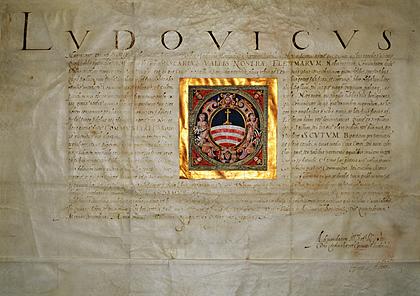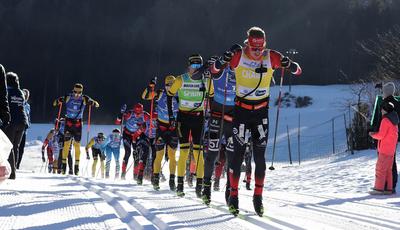25.01.2026
THE HISTORY OF THE MAGNIFICA COMUNITA' DI FIEMME
its origins

| News date | 07.12.2010 |
Before describing the subject of how the pollution problem is tackled on our territory, and we as a Common Property contribute to the management of it, it is considered of paramount importance to write down the main guidelines of what was and what is today the Magnifica Comunità di Fiemme, so to allow the reader to understand the type of Institution that we are talking about. The comprehension of the historical role played, in the last nine centuries, by the Institution in the tree different periods, that they can be divided, must be in depth to be able to understand the peculiarity of it and its exercise of sovereignty, first in the frame of the Holy Roman Empire (Das Heilige Romische Reich Deutscher Nation), secondly during the Austrian Empire, later Austrian Hungarian Empire, and after 1920 in the Italian Kingdom and now in the Italian Republic. The three documented periods, of the history of the Community, begin with the infeudation document written in the year 1111. In this year, the existing Community, was formally brought under the saxon law governing the Holy Roman Empire, and practically lost its total freedom that it was experiencing before that. The saxon law ruled the Empire until 1802/1803 when, with the treaty of Paris and Regensburg, it was liquidated by Napoleone Bonaparte, and, by the down fall of the Holy Roman Empire, the saxon law was also wiped out and the new concept of sovereignty was introduced. It is obvious that, when the Body out of which the legal existence of all others depend, is wiped out, and a new sovereignty is implemented, all his subject, that were his off springs, are also bound for the change, and this will reflect on their future and operations as well. Until 1802/1803 the Community could be compared with a Principality, though it was not a personal enfeoffment like a Duchy or County or so on, but a collective infeudation, so a sort of Republic, and that is why it was something very peculiar, and, as such, governed the Valley with a feudal sovereignty on a territory of about seven hundred square kilometres. At that time, with the down fall of the Empire, the Community, as all infeudated subject, lost its sovereignty and became part of Bavaria, ruled by the House of Wittelsbach and Beauharnais (son in law of Napoleone), with the lost, through the French Bavarian Government of Munich, of about five hundred square kilometres that were given to the newly created Municipalities. After the Napoleone Bonaparte era, the Community became part of the Austrian Empire and, in 1867, with the establishing of the second seat of Government in Budapest, became part of the Austrian Hungarian Empire, and this went on until 1920 when it was annexed to the Italian Kingdome. During this period the Community had no judicial, fiscal or any other power but only to administer its assets that were the woodlands, the dairy farms, land and buildings, hunting and fishing. Since then, politically, not much has been changed, but recently, due to the need of restructuring the whole Autonomous Province of Trento according to its belonging to the European Union, it seems that wheel of history is running the other way around, and, two hundred years after loosing its feudal sovereignty, our Community may regain back some of it, in a new way according to the new status of the Local and Central Governments in the wake of European Union existence. During the decades the Community has been buying shares of many Companies involved in the running of the territory and in this way we have the possibility of contributing to the land management besides our own. In the territory of the Magnifica Comunità di Fiemme, live, since time immemorial, three ethnic groups, the Italian, the Ladinish (in Switzerland called reto-romantsch) and the German. Today we are part of the Autonomous Region Trentino Alto Adige/Sudtirol, Province of Trento/Trient, Italy. In this Institutional set up we enjoy , as all others, a great number of advantages, as we can refer directly to the Local Government that has a greater sensibility towards local peculiarities then what it had the Central Government and therefore we can improve our performances in many fields.
Links:
back to list
Links:
Main Sponsors




Official Sponsors


Sustainable Partner

Official Suppliers























Official TV Broadcaster

Institutional Partners






Friends


Under the patronage of
















